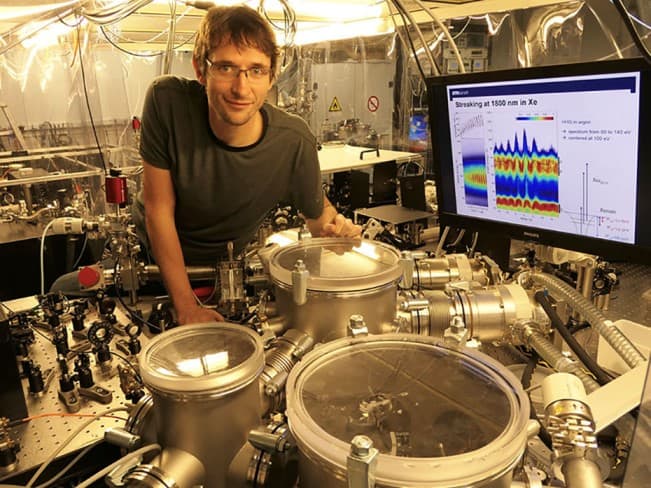Researchers create World’s Shortest Laser Pulse; can track the movement of electrons in slow motion
In a breakthrough research update, a team of researchers at ETH Zurich have succeeded in generating the world's shortest laser pulse with a duration of only 43 attoseconds. This means that this laser pulse is the shortest controlled event to have ever been created by humans. It would enable researchers to observe in high detail how electrons move within a molecule or how chemical bonds are formed.

This also translates into huge implications for fundamental physics at the level of atoms. Starting from an infrared laser, the researchers generate a soft X-ray laser pulse with a very large spectral bandwidth. As a result, various elements including phosphorus and sulphur can be directly observed by exciting their inner-shell electrons. This enables the researchers to observe the reaction steps with higher resolution. The faster a charge transfer can take place, the more efficiently a reaction can proceed. It also means that the migration of electrons in more complex molecules can now be tracked with an even higher time resolution.
The research also entails that the chemical reactions can now be directly manipulated. Using a laser pulse can alter the course of a reaction – even chemical bonds can be broken by stopping the charge shift at a certain location in the molecule. Such targeted interventions in chemical reactions had not been possible until now, since the time scale of electron movement in molecules was previously unreached.
Apart from providing insights into the behavior of electrons the Attosecond spectroscopy could contribute to the development of more efficient solar cells. Since for the first time we would be able to follow the process of excitation through sunlight up to the generation of electricity in a step wise manner.
The group headed by Prof. Hans Jakob Wörner is already working on the next generation of even shorter laser pulses. If the research comes through, it would be possible to record more detailed images, and thanks to a wider X-ray spectrum even more elements could be probed than before. The work is published in the journal#-Link-Snipped-#.
Source: #-Link-Snipped-#

The research also entails that the chemical reactions can now be directly manipulated. Using a laser pulse can alter the course of a reaction – even chemical bonds can be broken by stopping the charge shift at a certain location in the molecule. Such targeted interventions in chemical reactions had not been possible until now, since the time scale of electron movement in molecules was previously unreached.
Apart from providing insights into the behavior of electrons the Attosecond spectroscopy could contribute to the development of more efficient solar cells. Since for the first time we would be able to follow the process of excitation through sunlight up to the generation of electricity in a step wise manner.
The group headed by Prof. Hans Jakob Wörner is already working on the next generation of even shorter laser pulses. If the research comes through, it would be possible to record more detailed images, and thanks to a wider X-ray spectrum even more elements could be probed than before. The work is published in the journal#-Link-Snipped-#.
Source: #-Link-Snipped-#
0
